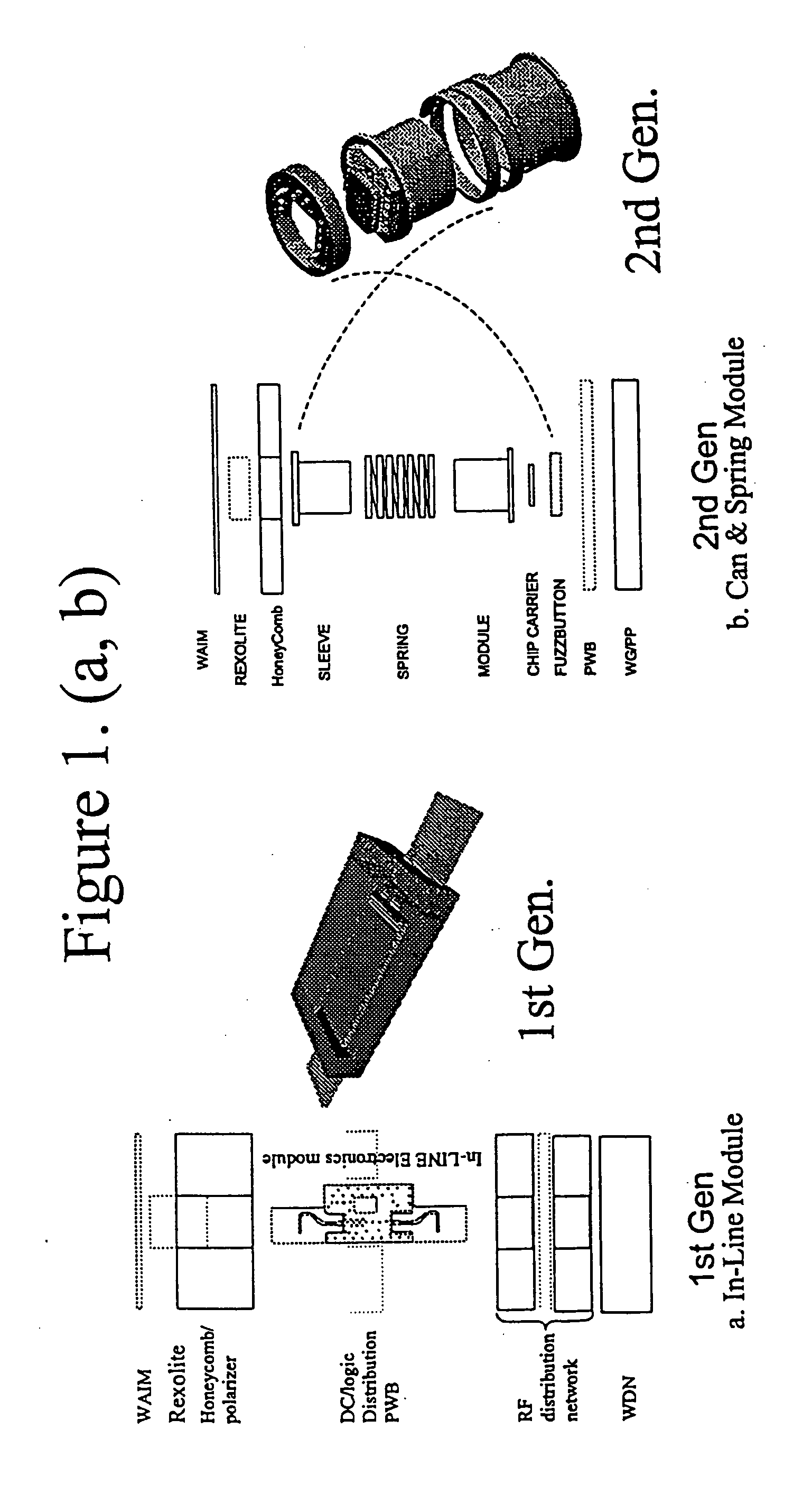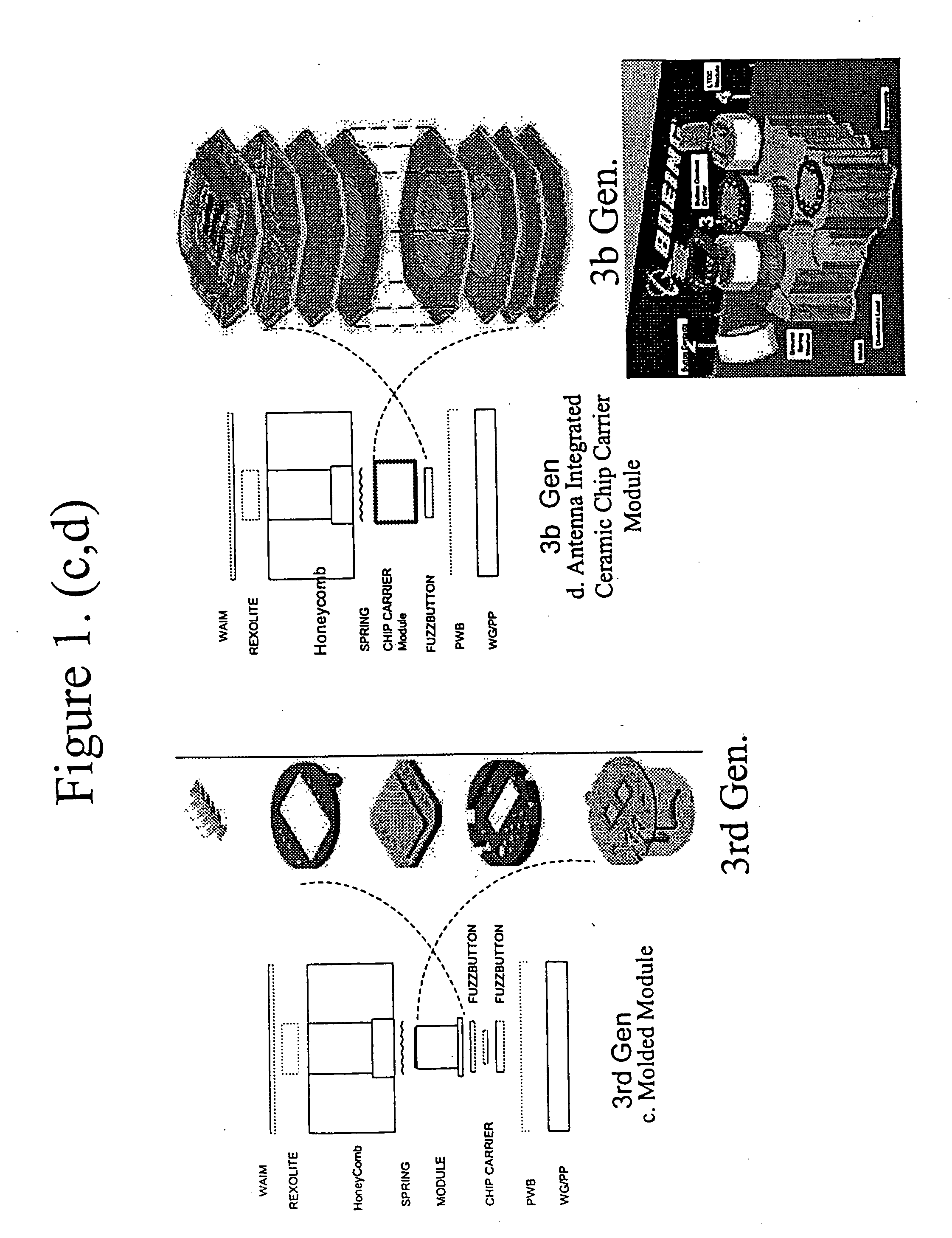Millimeter wave antenna
a millimeter wave antenna and antenna module technology, applied in the field of antennas, can solve the problems of difficult to provide the extremely tight spacing between adjacent antenna modules, the overall cost of the phased array antenna system is lower, and the space is severely limited
- Summary
- Abstract
- Description
- Claims
- Application Information
AI Technical Summary
Benefits of technology
Problems solved by technology
Method used
Image
Examples
Embodiment Construction
[0033] The following description of the preferred embodiment(s) is merely exemplary in nature and is in no way intended to limit the invention, its application, or uses.
[0034]FIGS. 2 and 3 illustrate an antenna system 10 in accordance with a preferred embodiment of the present invention. The antenna system 10 is able to operate within the V-band spectrum, and more preferably at 60 GHz, with ±60° scanning capability. The system 10 generally includes a mandrel 12, a first electromagnetic wave energy distribution panel 14 secured to a first side 16 of the mandrel 12, a second electromagnetic wave energy distribution panel 18 secured to a second opposing side 20 of the mandrel 12, and a pair of subpluralities of antenna modules 22a and 22b. The mandrel 12 includes an input 24 and a pair of spaced apart interconnects 26 for coupling to a printed circuit board (not shown). The interconnects 26 and the input 24 are formed at a first end 28 of the mandrel 12 and the modules 22a and 22b are...
PUM
 Login to View More
Login to View More Abstract
Description
Claims
Application Information
 Login to View More
Login to View More - R&D
- Intellectual Property
- Life Sciences
- Materials
- Tech Scout
- Unparalleled Data Quality
- Higher Quality Content
- 60% Fewer Hallucinations
Browse by: Latest US Patents, China's latest patents, Technical Efficacy Thesaurus, Application Domain, Technology Topic, Popular Technical Reports.
© 2025 PatSnap. All rights reserved.Legal|Privacy policy|Modern Slavery Act Transparency Statement|Sitemap|About US| Contact US: help@patsnap.com



